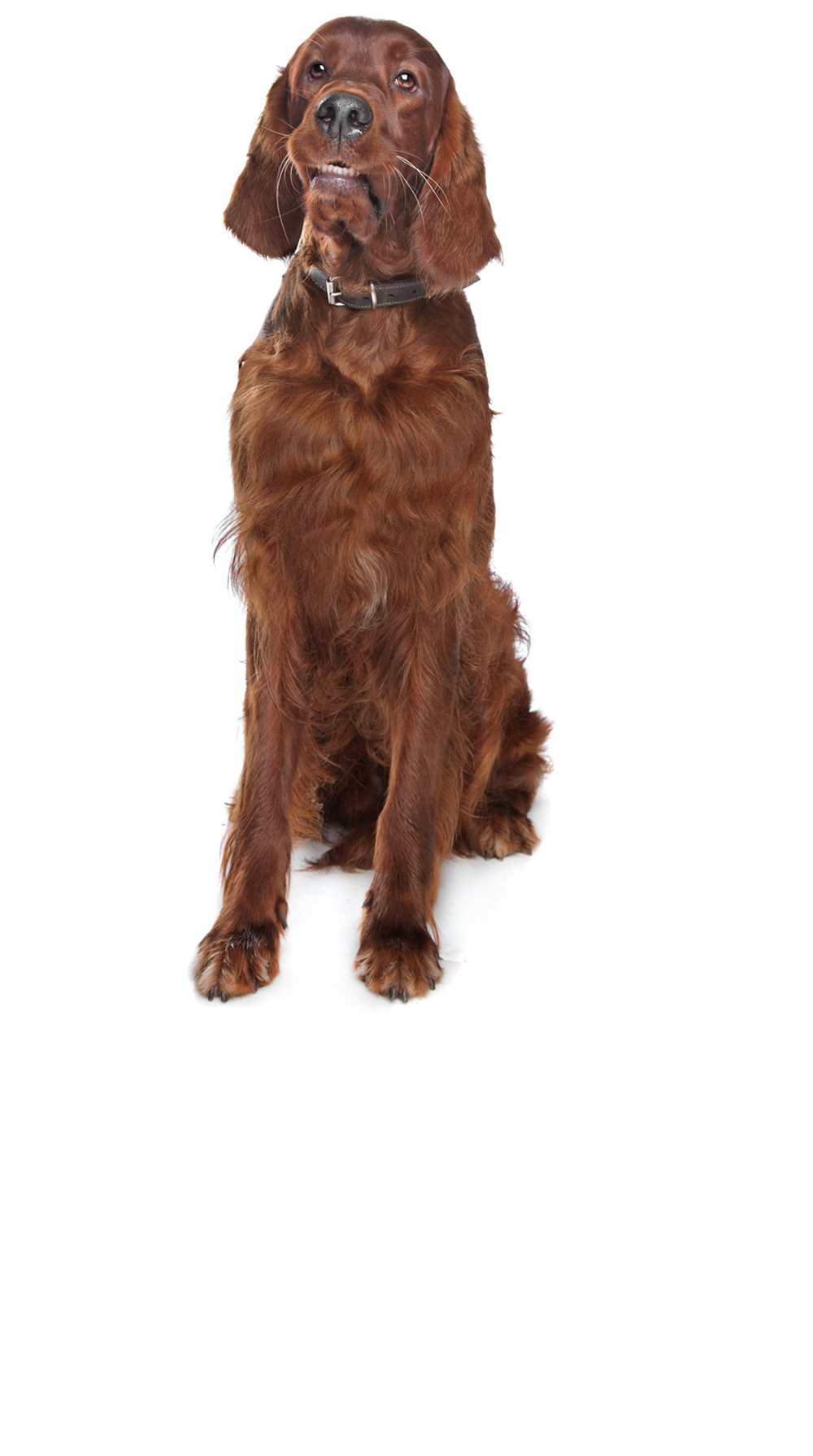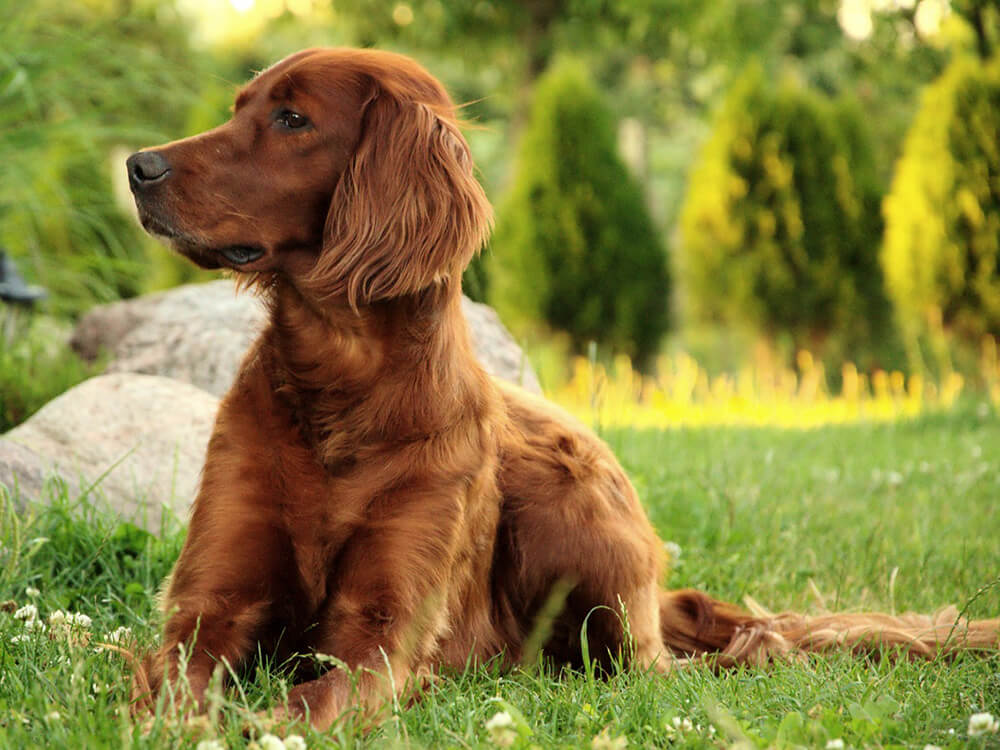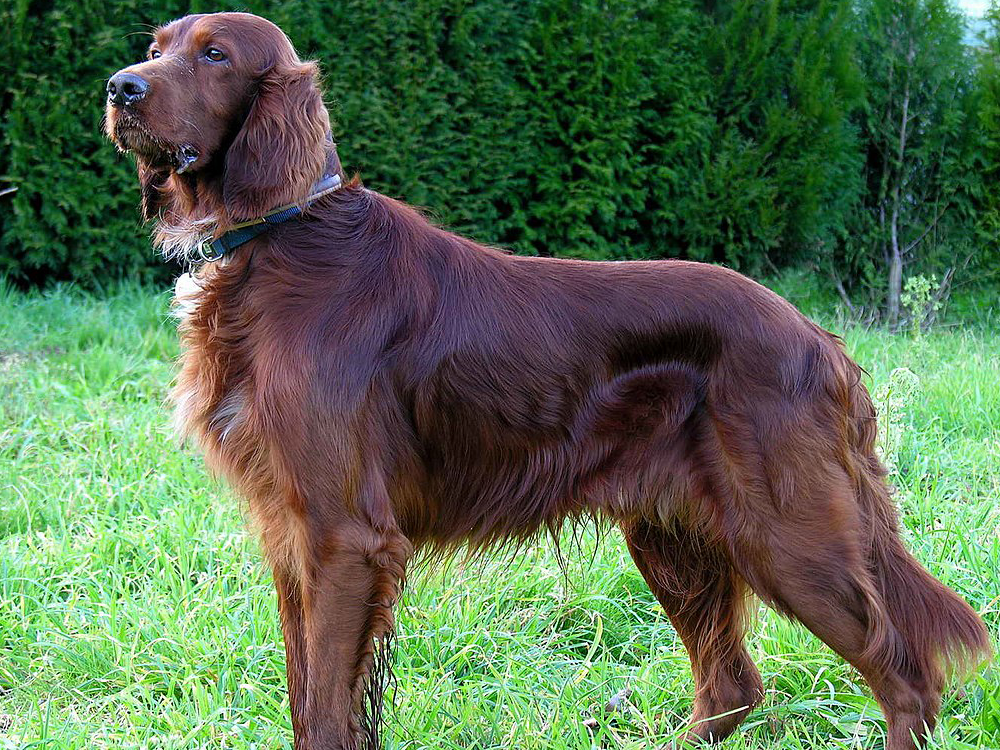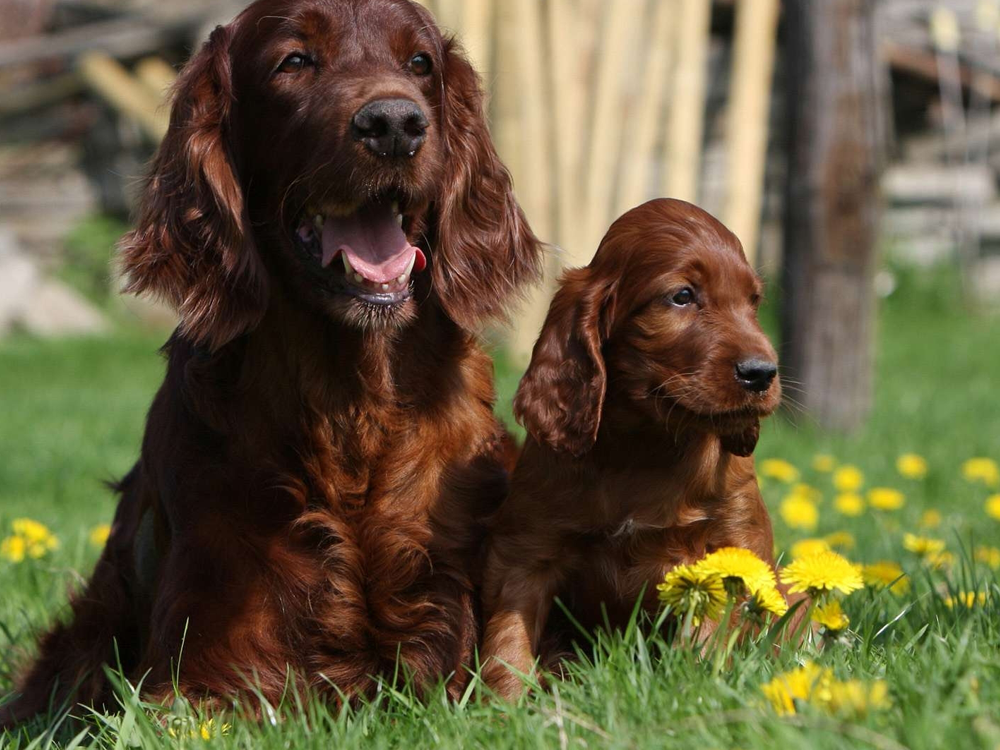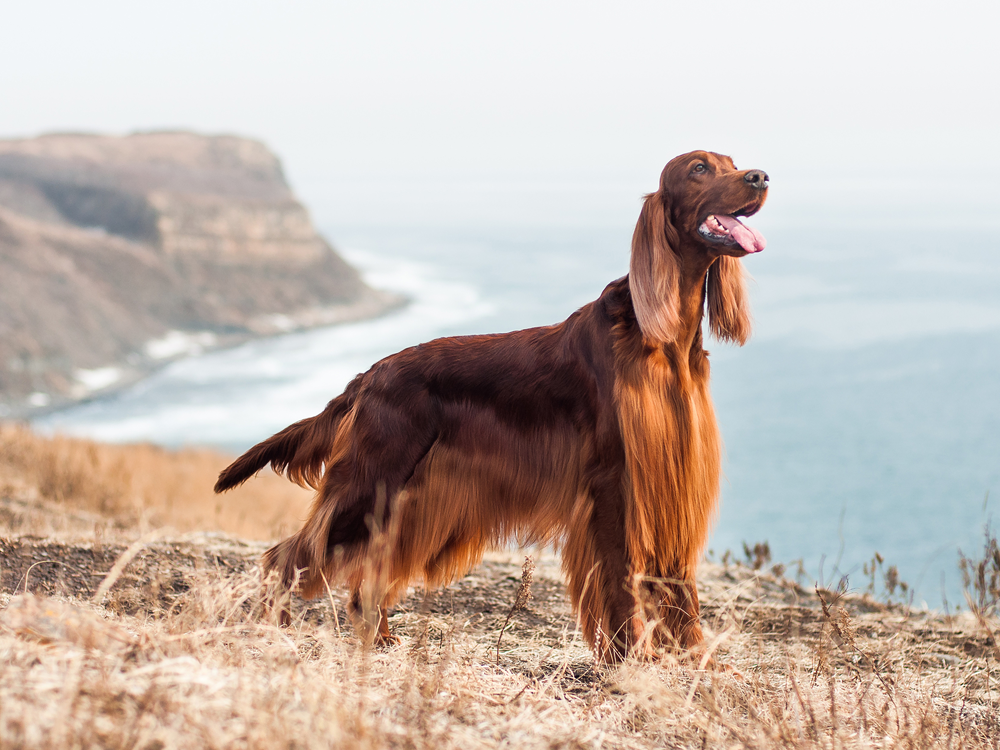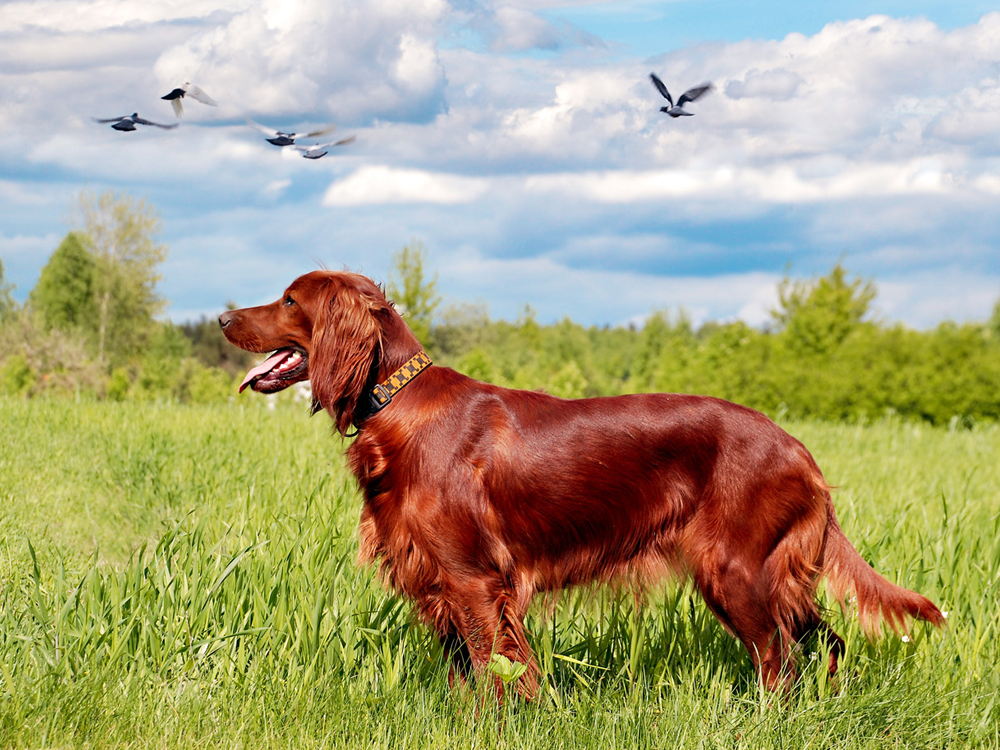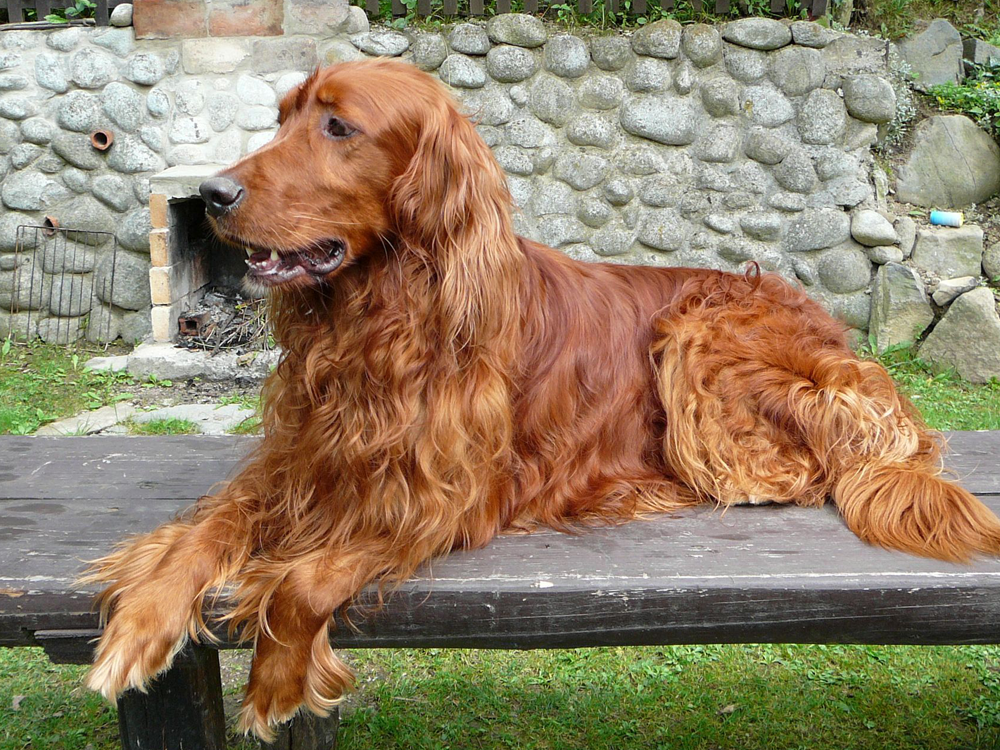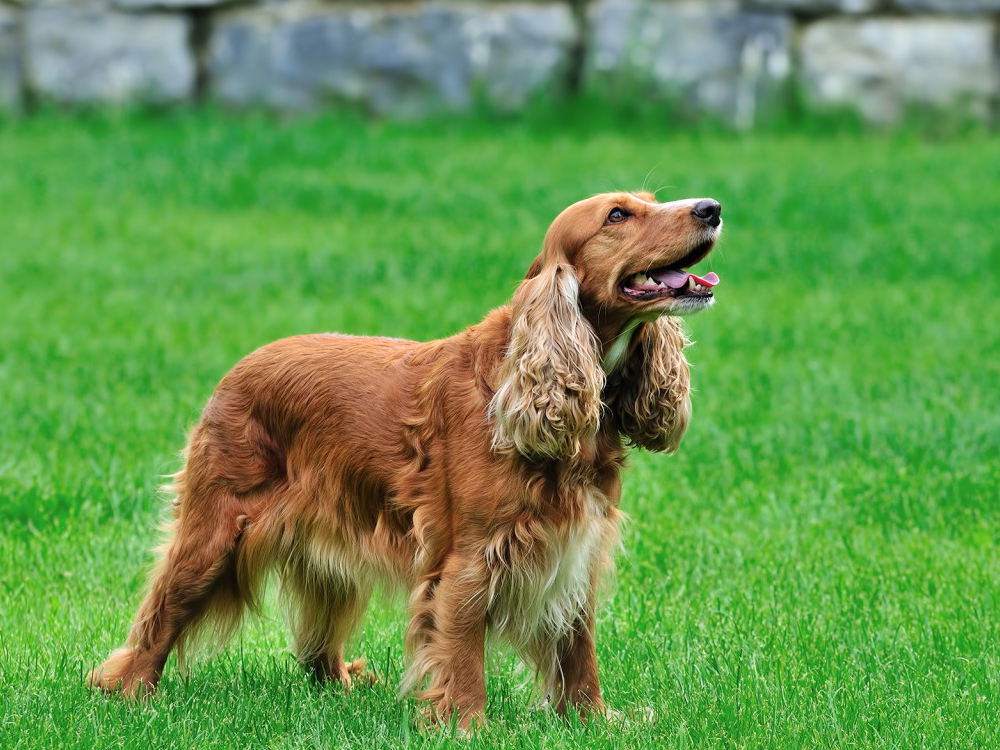
Irish Setter Breed Pictures
Vital Breed Stats
| Height: | 66 - 71 cm M | 61 - 66 cm F |
| Weight: | 29 - 34 kg M | 25 - 29 kg F |
| Breed Group: | Gundog Dog Group |
| Life Expectancy: | 11 - 14 years |
| KC Registered: | No |
Breed Characteristics
| Size: |  |
| Grooming: |  |
| Exercise Level: |  |
| Trainability: |  |
| Barking Level: |  |
| Good with Children: |  |
| Good with other pets: |  |
| Affectionate: |  |
| Protective: |  |
| Cost to Keep: |  |
Give a thumbs up if you love the Irish Setter

0
More About the Breed
History
The ancestry of the Irish Setter dates back to the early 1700s in Ireland. While its origin is subject of debate, a few speculate that the breed is likely to be descended from a combination of the Irish Water Spaniel, the Irish Terrier, the Springer Spaniel and Pointers, also some of the other two Setters blood thrown in the mix such as the English Setter and the Gordon Setter.
It was bred to be a field hunting dog in Ireland, specifically as a pointer to locate birds with its strong scenting skill. However, the Irish Setter’s earliest ancestors were initially coloured red and white. In the 19th century, its solid red colouring attracted more enthusiasts since red is easier to spot during a hunt. Add in the influence of the stunning Champion Palmerston, a lithe, red-mahogany dog that pushed the influence of all-red dogs in 1862. Thus, began the red Irish Setter taking precedence as an ideal colour for further breeding until today.
Over the years, the breed gained fame more due to its physical beauty, as well as its easy-going and happy disposition. In the mid-1900s, the Irish Setter was highly sought after as a show dog than as a hunting dog. Today, it is a favourite family companion, and sometimes a hunting dog. The breed has one time been the inspiration for Walt Disney movie and the books about "Big Red" in 1962. The Irish Setter is Kennel Club registered.
Appearance
The Irish Setters are athletic dogs with glamorous appearance. They have an average height of 54 to 67 centimetres and weight of 60 to 70 pounds. They are refined and good-looking dogs that boast of lean, dome-shaped heads with long square muzzles, powerful jaws and dark mahogany/walnut or black nose with wide nostrils. Wearing kind and intelligent expressions, Irish Setters have almond-shaped eyes the colour of dark hazel or dark brown. Ears are moderate in size, set low and back hanging close to the dog's head.
Irish Setters also boast of a muscular form from their long arched necks to deep and sloping shoulders, straight sinewy front legs, deep chests, well-sprung ribs and well-muscled loans. Their tails are moderately long, naturally hanging below the level of their back when relaxed or standing just level to their back when alert or excited.
When it comes to their coats, the Irish Setters are outfitted with moderately long and glossy coat without curls or waves. They come in a red chestnut colour that is silky to touch. Other Irish Setters often sport a small amount of white colour on the chest, throat or toes.
Grooming
Temperament
Intelligence
Irish Setters get on well with children. They are also widely used as therapy dogs in hospitals and schools. Often they sit or lie on the floor with children as students read to the Irish Setter, creating a calming and relaxing atmosphere. Although in the household, care must be taken during interactive games since Irish Setters are known to be a bit rowdy. Always supervise playtime to make sure no untoward event will occur such as accidentally knocking over toddlers.
The Irish Setter also gets along well with other dogs. However, other animals can be in danger if this dog breed is not socialised early. Remember that the Irish Setter is a hunting dog, which means its prey drive won't just go away. Even with household pets like cats, guinea pigs and rabbits they grow up with, they will on occasion give chase when they become too excited.
Nutrition
- Senior and less active: up to 1,340 calories daily
- Typical adults: up to 1,500 calories daily
- Physically active/working dogs: up to 1,670 calories daily
Feeding
Health
Exercise
Cost of Ownership
Before owning a dog, it pays to face the realities of being a responsible dog owner, especially in the financial department. No matter how much you want to buy an Irish Setter puppy, if you don't have the funds to raise and provide its needs in its entire lifespan, perhaps you shouldn’t be owning one. Before you decide on even selecting a breeder or an adoption centre, try to compute basic costs to owning and raising an Irish Setter to see if you can afford it. Below is an overview of what's in store for you budget-wise.
- Puppy price for an Irish Setter is anything from £550 to £850 for a well-bred one.
- Pet insurance for a 3-year old Irish Setter would be £25 to £40 a month. However, the amount will vary depending on where you live.
- When it comes to food cost, buying high-quality dog food will cost you £50 to £60 a month, excluding treats.
- When it comes to making sure your dog is in good health, regular veterinary consultations will cost you at least £1,000 a year.
Is an Irish Setter Right for You?
- The Irish Setter is a playful and loving breed with a carefree attitude.
- It is generally a sociable dog breed and less ideal for a guard dog.
- Its moderately long coat will require frequent brushing.
- It has high exercise needs, usually requiring not less than an hour of mental and physical activities.
- Irish Setters get on well with other dogs, but care should be taken when it comes to smaller household pets.
